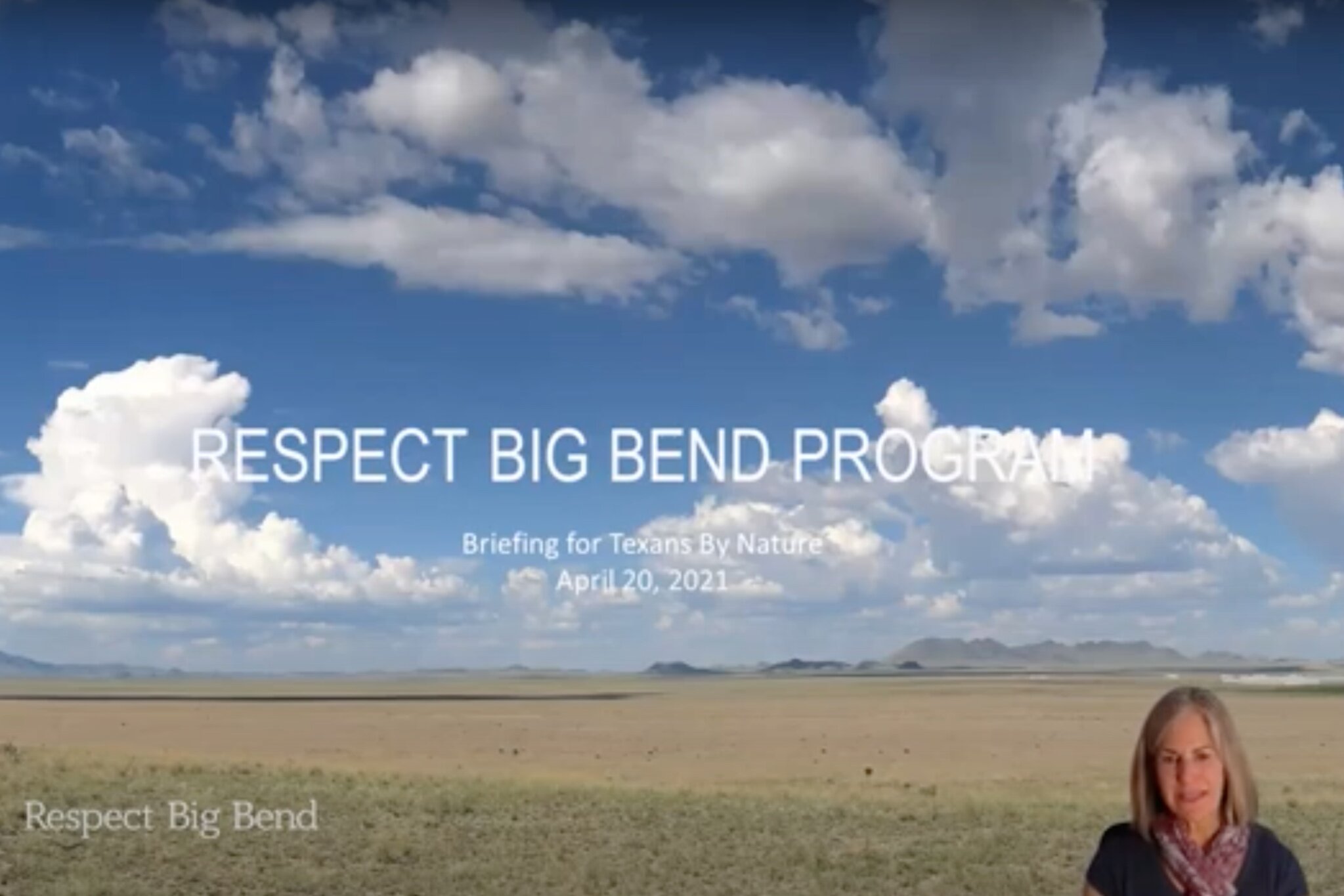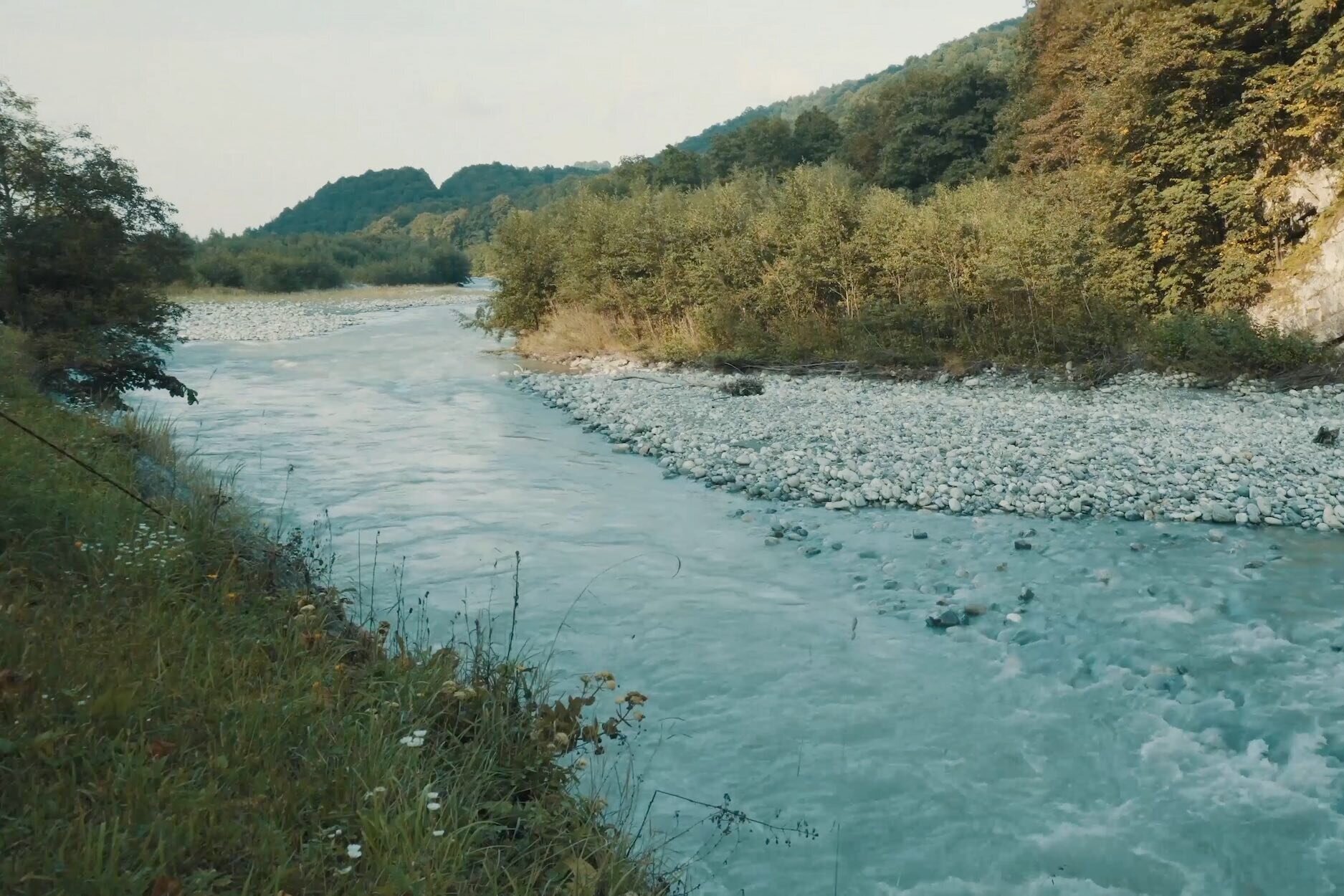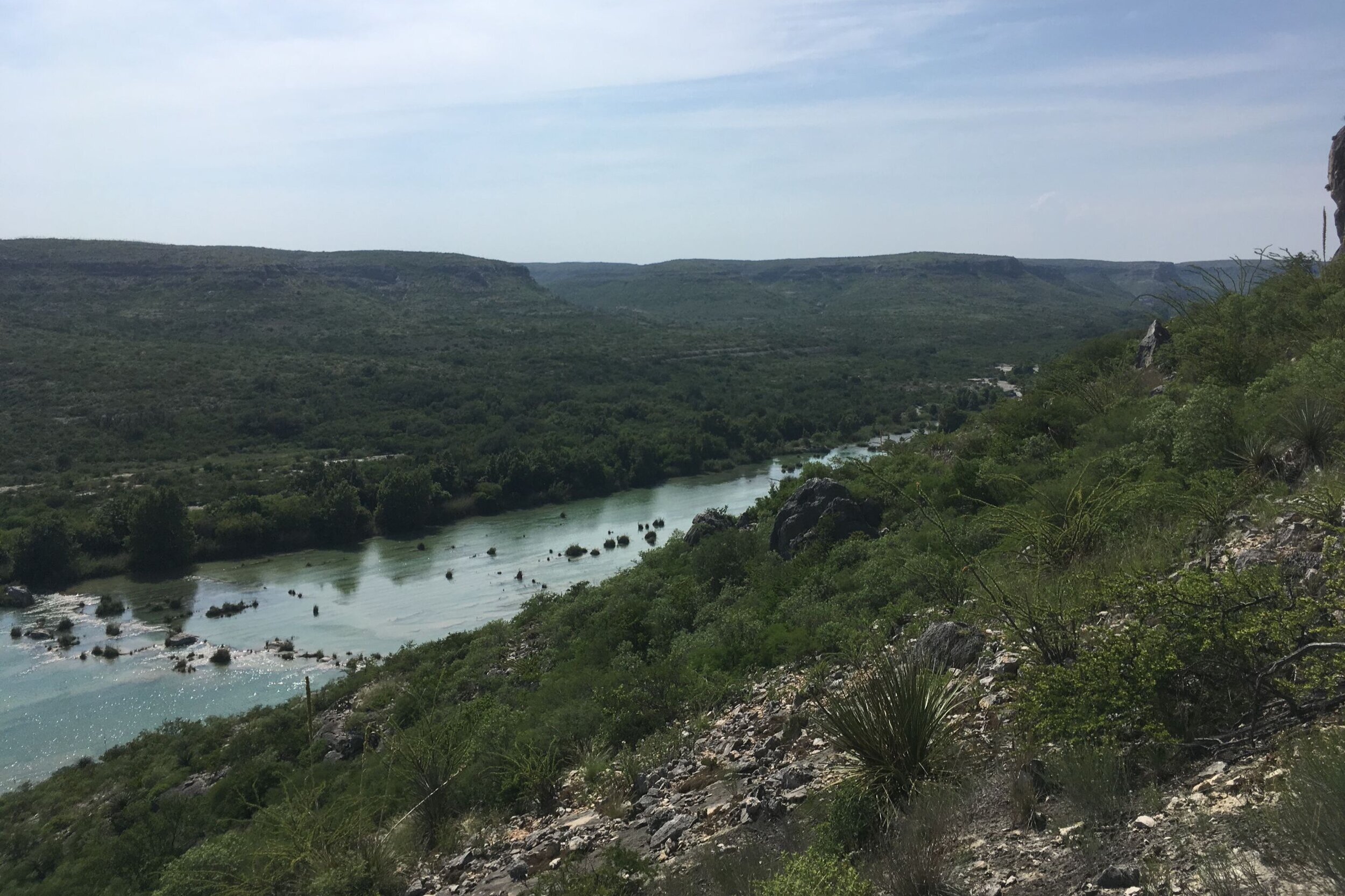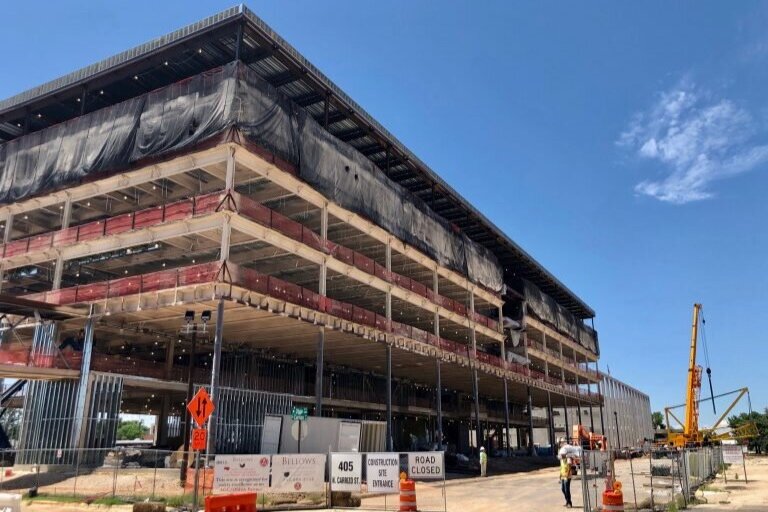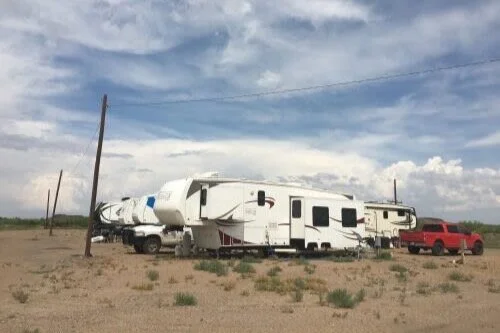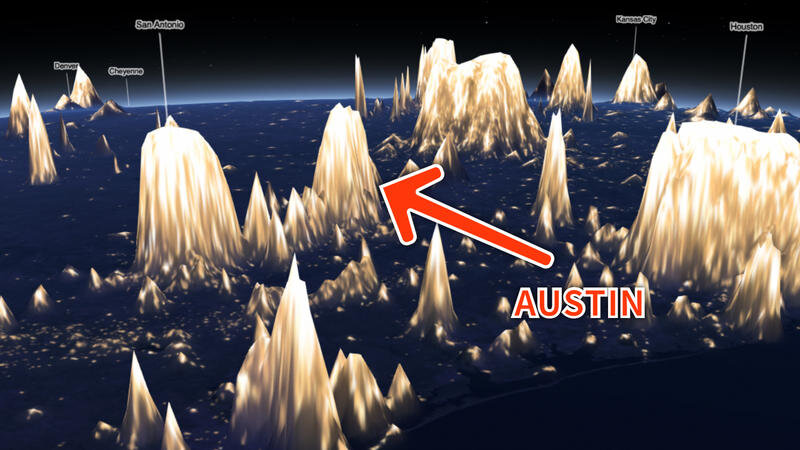
HEADLINES
A new report looks at ways that solar, wind and oil projects could move forward while protecting the region’s way of life.
A long-awaited report from the Respect Big Bend Coalition lays out recommendations for balancing new energy projects with land conservation in the Big Bend region.
In reporting on energy, I have seen factions demonize each other and resort to litigation or regulator manipulation. The Cynthia and George Mitchell Foundation and the Respect Big Bend Coalition, themselves an odd amalgam of energy money and environmental activism, are trying to show us a better, longer-lasting way to ensure we have the energy we need without ruining our communities.
In 2020, Texan by Nature (TxN) named Respect Big Bend a TxN Conservation Wrangler. Representatives of the Respect Big Bend Coalition attended the 2021 Conservation Summit at the George W. Bush Presidential Center in Dallas, Texas on April 20, 2021 to officially receive the award. This video, prepared by TxN on behalf of RBB showcases the public engagement aspect of the Respect Big Bend effort.
Texan by Nature named The Respect Big Bend Coalition a Conservation Wrangler award winner in 2020. This video outlining the Respect Big Bend program, its goals and and outcomes was presented by Melinda Taylor at the awards ceremony at the George W. Bush Presidential Center on April 20, 2021.
Uplift Texas is a new initiative, launched in the aftermath of this spring's energy downturn, which builds on Respect Big Bend's concept of self-determination but adds an economic component to the work. Starting in West Texas, Uplift Texas will help Texans re-think what their economic future can look like, expanding beyond the boom and bust cycle to make local economies more resilient and improve Texans' quality of life.
Respect Big Bend, a regional grassroots planning effort focused on energy development, is breaking new ground on behalf of landowners and communities in far West Texas.
Texan by Nature (TxN), a Texas-led conservation non-profit announced today that Respect Big Bend has been named among the 2020 Conservation Wranglers. The organization’s Conservation Wrangler program recognizes six innovative conservation projects across the state of Texas for their science-based and results driven approach to conservation along with their ability to positively impact people, prosperity and natural resources.
Record-breaking oil production in the Permian Basin has brought the boom to the Big Bend’s doorstep for the first time. Is it too late to save this pristine landscape?
Oil and gas production dominates further north, but solar and wind farms are likely to be more common in the Big Bend area.
No oil and gas baron since John D. Rockefeller has made more of an impact on society than George P. Mitchell. But this son of poor Greek immigrants who died a billionaire wanted to leave a legacy beyond oil and gas.
Marilu Hastings is the vice president of sustainability programs for the Cynthia and George Mitchell Foundation — the primary funder of the Respect Big Bend initiative. She discusses the impetus for helping start the initiative.
Dr. Michael Young is a scientist with the Bureau of Economic Geology at UT Austin. He’s been working with a team to study energy projections in Far West Texas.
Over a twenty year period, Texas lost 2.2 million acres of working lands, with 1.2 million of those being converted to non-agricultural use in the last five years alone, according to a new study of Texas land trends from 1997 to 2017 by Texas A&M Natural Resources Institute.
An end to a hiring spree could mean less strain on infrastructure and lower home prices, but also less money coming into the region.
Diana Nguyen speaks to Bill Wren of McDonald Observatory, whose job is to keep the skies of Far West Texas dark. They discuss Wren’s collaboration with oil and gas companies and municipalities across the region, and what residents can do to help.
Once a playground for the area's residents, the town's sand dunes are in demand by oil companies that use the sand for hydrolic fracturing.
Turbines bring clean energy, but they’ve fundamentally changed people’s view of this pristine corner of West Texas.
The Permian Basin has never been busier. More oil is being pumped than ever before, thanks to hydraulic fracking, and energy companies are making plans to stick around long-term. By most accounts, the region is booming. But, some analysts and community leaders believe the oil industry is entering into a more stable phase where the days of crazy booms and terrible busts may be a thing of the past.
Fears that closure of the famous Balmorhea State Park pool would hurt the local economy have been calmed by the influx of new oil workers.
The Big Bend region is considered one of the most biodiverse in the Western Hemisphere, while also sitting in one of the most energy-intensive areas of the world — and experts say if that energy is not developed responsibly, the sustainability of the region and its resources could be at risk.
Still in its infancy, the Respect Big Bend Coalition — a communal collaboration — was formed to ensure Big Bend's resources are conserved while the benefits of energy development remain maximal.
The Cynthia & George Mitchell Foundation, along with other partners, hopes to protect the Big Bend region from encroaching energy development by creating a new initiative called the Respect Big Bend Coalition.
Its purpose is to work with West Texas communities along with energy companies to ensure natural resources in Brewster, Presidio and Davis counties are developed responsibly.
Fracking pioneer George Mitchell might just protect Texas' last wild place from the industry he helped revitalize.
The West Texas energy sprawl is continuing to expand, with little sign of stopping, and in response, a new coalition has been formed in hopes to mitigate the environmental impact that development could have on the Big Bend region.
Turbines would use excess gas from drilling sites to power fracking equipment.
The Cynthia and George Mitchell Foundation will offer a press briefing on Thursday, May 2 at 10:30 am in advance of George Mitchell being honored posthumously that evening by the Petroleum Museum….
The briefing is of particular importance to those who live and love far West Texas, an area the Mitchells have fought to protect through their family foundation, the Cynthia and George Mitchell Foundation….
Respect Big Bend Country is a public campaign and regional planning process—a collective impact model that the Mitchell Foundation is confident can maximize the benefits of responsible energy development while conserving natural and cultural resources.
The producers of The Rational Middle of Energy, in collaboration with the Cynthia and George Mitchell Foundation, will introduce “The Long Game,” a short-documentary series that addresses energy development's impact in the greater Big Bend region of far West Texas, and what is being done to minimize impact to landowners and communities and conserve this unique area's natural resources.
Lobbyists are challenging the value of subsidies Texas gives to wind-power companies. It’s part of a larger effort to weaken the renewable-energy industry.
The list of words describing Mitchell is lengthy — oilman, philanthropist, developer, sustainability pioneer, environmentalist, entrepreneur, futurist, Renaissance man, visionary. Some of the labels seem contradictory because Mitchell was a man of incongruous passions.
This map called Earth at Night, Mountains of Light was developed by cartographer Jacob Wasilkowski using NASA satellite imagery to map the world according to nighttime brightness.
If you check out West Texas, you might notice the light peaks don’t necessarily correspond to cities — some of those are oil fields where natural gas is flared to dispose of it.
In a global collapse of oil prices five years ago, scores of American oil companies went bankrupt. But one field withstood the onslaught, and even thrived: the Permian Basin, straddling Texas and New Mexico.
A combination of technical innovation, aggressive investing and copious layers of oil-rich shale have transformed the Permian, once considered a worn-out patch, into the world’s second-most-productive oil field.






